#Asia square office
Text
The East India Company ships
The East and West India Company ships were not ship types in the usual sense. They were generic terms for a series of merchant ship types that travelled between Europe and the overseas colonies in the East and West. Common features of these ships were three masts, several cannons and a high bulwark to make it more difficult for attackers to board them. Their valuable cargo made the ships attractive targets, so they often travelled in convoys, accompanied by medium-armed merchant ships or frigates for protection. But let's go into more detail.

The East Indiaman 'Earl of Abergavenny', off Southsea, by Thomas Luny 1801
The ships of the East India Company were the ships of the English East India Company, a public limited company (shipowners at the early time of the East India Company contributed their ships to the company and received a certain share in the company in return. They received a proportionate share of the company's overall profits and received a dividend even if their own ship was lost, since the 18th century the company build their own ones as well.) which traded with Asia from 1600 to 1834. The company had a monopoly on trade with the East Indies, China and other regions, and its ships carried goods such as spices, tea, silk, cotton, porcelain and opium. The company also played an important role in the colonisation and administration of India and other territories.

East India Company ships at Deptford, by English School, c. 1660
The ships of the East India Company were known as East Indiamen or as Indiamen and were among the largest and most modern of their time. They were designed to withstand long voyages, carry heavy cargoes and defend themselves against pirates and enemy ships. They were also equipped with cannons and muskets and had a crew of sailors, soldiers, officers and passengers. Because of the need to carry heavy cannons, the hull of the East Indiamen - like most warships of the time - was much wider at the waterline than on the upper deck, so the guns on the upper deck were closer to the centreline to increase stability. This is known as a tumblehome. The ships usually had two complete decks for accommodation within the hull and a raised aft deck. The aft deck and the deck below were lit by galleries with square windows at the stern. To support the weight of the galleries, the hull lines were full towards the stern. As mentioned above, the ships were armed and painted to look like a warship and an attacker could not be sure if the embrasures were real or just painted, and some Indiamen carried a substantial armament.
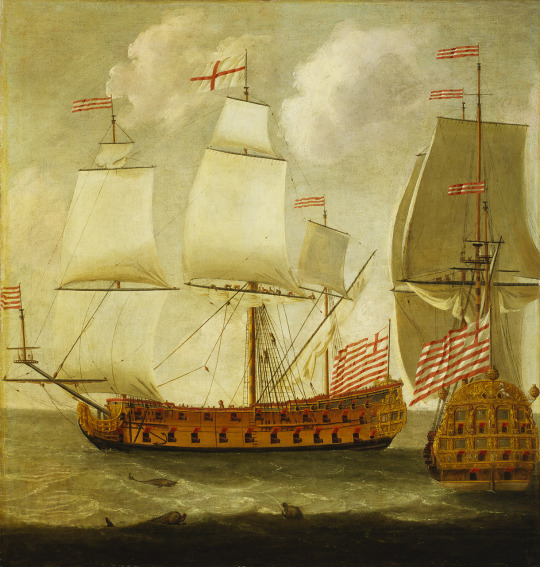
Two views of an East Indiaman of the time of King William III, by Issac Sailmaker, 1685
The Royal Navy acquired several East Indiamen during the Napoleonic Wars and made them fourth rate ships (e.g. HMS Weymouth and HMS Madras), perpetuating the confusion of military ships with merchant vessels as prizes. In some cases, the East Indiamen successfully fended off attacks by the French. One of the most famous incidents occurred in 1804 when a fleet of East India ships and other merchant vessels under Commodore Nathaniel Dance successfully fought off a squadron commanded by Admiral Linois at the Battle of Pulo Aura in the Indian Ocean. And during this time, some of the ships were even travelling under the protection of a Letter of Marque, which allowed them to make their own prizes.

The East Indiaman 'Prince of Wales' disembarking troops off Gravesend, 1845, by John Lynn, 1845 or later - She was built by Green's of Blackwall in 1842 to a design known as that of the "Blackwall Frigates" - Indiamen with the single-decked appearance of frigates.
The ships of the India Companies were not only involved in trade, but also in exploration, diplomacy, warfare and scientific research. They visited many harbours and islands, built factories and forts, fought in battles and wars, negotiated treaties and alliances and collected samples and data. With the advent of the smaller and faster Blackwall Frigates in 1834 came the end of the great Indiamen as these small frigates sailed much faster.
#naval history#east and west india company#ships#1600-1834#blackwall frigate#age of sail#merchant vessels
162 notes
·
View notes
Text
The US Air Force plans to bring the Pacific island airfield that launched the atomic bombings of Japan back into commission as it tries to broaden its basing options in the event of any hostilities with China, the service’s top officer in the Pacific says.
Gen. Kenneth Wilsbach, commander of Pacific Air Forces, told Nikkei Asia in an interview published this week that North Airfield on the island of Tinian will become an “extensive” facility once work has been completed to reclaim it from the jungle that has grown over the base since the last US Army Air Force units abandoned it in 1946.[...]
Tinian is part of the Commonwealth of the Northern Mariana Islands, a US territory in the Pacific, some 6,000 kilometers (3,700 miles) west of Hawaii in the Pacific. Only about 3,000 people live on the 39-square-mile island.[...]
The Air Force’s Fiscal Year 2024 budget request shows $78 million has been sought for construction projects on Tinian island.
21 Dec 23
64 notes
·
View notes
Text
Excerpt from this story from Earth Island Journal:
KOCHKOR KALDARBAEV REMEMBERS the forest of his childhood. It’s dense, with thickets of tall grass and brambles that make walking in a straight line impossible. Trees come in all shapes and sizes: spindly youngsters, stately elders, tiny seedlings peeking up through the forest floor. They come in all varieties, too, from hawthorn and maple to fruit-bearing trees like apple, pistachio, and plum. And everywhere you look, there’s the walnut: wide, smooth trunks branching off into bushy green canopies, with clusters of round fruits waiting to be cracked open to get at the creamy nut inside.
Kaldarbaev was born and raised in the village of Arslanbob in the mountains of southern Kyrgyzstan, a Central Asian nation home to the world’s largest natural-growth walnut forest. Today the forest covers some 50 square miles of a fertile valley of the Tian Shan Mountain range, which stretches from Uzbekistan in the west to China and Mongolia in the east.
His father spent 40 years working for the then-Soviet government as a forestry officer tasked with keeping the forest healthy and managing how people used it — which then, as now, mostly involved harvesting walnuts, the region’s main source of income and a key ingredient of the local culture and traditions.
For centuries, every fall, the residents of Arslanbob and other villages dotting these mountains have left their homes and camped out in the dense forest, spending weeks shaking down the ripe nuts from the trees and collecting them by hand. Usually, this is an all-hands-on-deck job for entire families, including children. During harvest season, the walnuts make their way from local markets in the nearby city of Jalal-Abad to Europe and Asia, mostly along trade routes that once comprised the Silk Road.
But by 2012, Kaldarbaev could walk through the forest understory with relative ease. The thick undergrowth was mostly gone, as were the smaller, more immature trees, says the 51-year-old who followed in his father’s footsteps and became a government forester. Only the tall trunks of mature walnuts remained standing, spaced oddly far apart.
A similar fate afflicts much of Kyrgyzstan’s forests, which make up only about 6.2 percent of the country’s land area but are rich in biodiversity. Between 2001 and 2022, the mountainous nation lost 2,470 hectares (6,100 acres) of forest cover, mainly to deforestation, overgrazing, and desertification. In recent years, climate change and development have added to the pressures facing these forests, putting rare species like Malus niedzwetzkyana, or Niedzwetzky’s apple, and Pyrus korshinskyi, or Kazak plum, and Arslanbob’s iconic walnuts at risk.
This is bad news, not only for the villagers who depend on these natural fruit forests, but for the rest of the world as well. Many of the widely- loved varieties of fruits and nuts that we enjoy today — including apples, almonds, pistachios, pomegranates, plums, apricots, cherries, peaches, pears, and, walnuts — originated from the wild species found in Arslanbob and other temperate montane forests of this region of Central Asia. At a time when domesticated strains of many of these trees are becoming increasingly susceptible to disease, these forests of crop wild relatives are a valuable genetic resource that could be critical for food security in the future.
6 notes
·
View notes
Text
Driven by utilitarian concerns with scarcity and fears of cascading environmental degradation, colonial officials implemented tree-planting programs of all sorts -- seed farms, erosion control projects, school forests and so on. [...] Imperial forestry describes a shared set of practices, convictions and institutions that bound Japanese forestry professionals into a network that spanned the Japanese empire itself. [...] Japanese woodsmen (with a venerable forestry tradition all their own) came to terms with Western notions of natural resource management and "scientific forestry." [...] Japanese foresters tailored European ideas about ecology, sustainability, and industrial development to the particular needs of the Japanese empire and the different biomes it encompassed. [...] Japan has played an outsized role in the management and control of Asia's forests. To understand how Japan has maintained such verdant hillsides at home, [...] we need to more fully appreciate its control of sylvan landscapes abroad -- be they in the colonial empire before 1945 or in Southeast Asia thereafter. [...] [W]e ought to place tenant farmers in colonial Korea and shifting cultivators in Kalimantan in the same analytical frame. [...]
---
The most obvious legacies are material: flora introduced during colonial occupation that still grow in Korea today. [...] As part of a campaign to supposedly "beautify" the Korean landscape [...], Japanese settlers planted [...] cherry blossoms along streets, in squares, and within parks across Korea. [...] Another impact can be found in the forestry institutions founded during colonial rule. The flagship Forestry Research Station established by the colonial government, for example, only grew after liberation, becoming a hub of agro-forestry research that underpinned South Korea's economic take-off under Park Chung-hee. Many of the architects of South Korea's so-called "forest miracle" -- the wildly successful project of reforestation in the 1960s and 70s -- were trained in colonial scientific institutions. This is not to suggest that the dense forests that today blanket South Korea are somehow due to colonial rule. Reforestation under Park was born of markedly different circumstances -- its Cold War context, authoritarian rule and energy portfolio. But that doesn't mean that foresters on either side of 1945 weren't united by the same sets of anxieties and aspirations. [...] [A] set of abiding concerns [...] have animated forest conservation measures across the full sweep of the tumultuous twentieth century in Korea. [...]
---
[R]eferences to the ondol (the radiant heated floors conventional to Korean dwellings) are everywhere in the forester's archive. Japanese woodsmen quickly marked the ondol and its associated lifestyle as ground zero of deforestation. By the 1920s, forestry officials had launched an ambitious campaign to gain control over the energy consumption patterns of the home -- a crusade on caloric inefficiency that furthered the reach of the colonial state into the domestic sphere. In this sense, the ondol provides an illuminating lens through which to examine how forestry touched the lived, even bodily, experience of colonial rule in a sometimes bitterly cold environment. This is especially true of the civilian experience of the Asia-Pacific War in Korea, a period of fuel scarcity that resulted in draconian programs of caloric control. [...]
[W]e have much to gain by looking beyond the boundaries of the islands of Japan to write its environmental history. Understanding the tree-smothered hillsides of the so-called "green archipelago" requires that we pay close attention to its material linkages with the rest of Asia. It demands that we track commodity chains, supply lines, and resource politics across the Pacific.
---
All words above are the words of David Feldman. As interviewed and transcribed by Office of the Dean, School of Humanities at University of California, Irvine. Transcript titled “Seeing the forest for the trees.” Published online in the News section of UCI School of Humanities. 21 May 2020. [Some paragraph breaks and contractions added by me. Presented here for commentary, teaching, criticism purposes.]
48 notes
·
View notes
Photo





On Monday, Anakbayan Queens joined 60 Filipinos & members of anti-war organizations in Times Square to protest the start of the largest-ever joint Philippines-U.S. military exercises, or Balikatan exercises. The exercises involve 12,000 u.s. troops, 5,000 Filipino troops, & 111 Australian troops, & will include live-fire in the contested West Philippine Sea. This year’s annual military exercises begin two months after Marcos Jr. agreed to grant u.s. troops access to 4 additional bases in the PH.
Dana from Anakbayan Manhattan spoke against the military industrial complex that exploits youth across both the u.s. & the Philippines. “How many Black & brown working class youth have been recruited & processed at this very office?” they asked. “How many of our classmates, friends, relatives, neighbors have been recruited into a war machine that forces them to fight against the interests of their own people? Military recruiters lure our people in by offering to pay for our college education. But why is education so expensive in the first place?”
Protestors representing Filipino youth & students, women, LGBTQIA+ people, migrants, & workers from the Northeast region called for “money & food for education, not for wars & state repression” & the junking of legislation like the Visiting Forces Agreement and Enhanced Defense Cooperation Agreement that allow the u.s. military to commandeer Filipino resources for their own political and economic gain.
We as AB Queens say u.s. out of the Philippines & all Asia Pacific! Funds for social services, not for war! End Balikatan & all imperialist military exercises!
Photos taken by Marion Aguas and Zack Garlitos.
-- Anakbayan Queens NY, 12 Apr 2023
#no to balikatan exercises#us troops out now#anti imperialism#philippines#new york city#youth activism
32 notes
·
View notes
Text
The changes I saw on television, I ached to witness on the ground: activists pushing against dictatorships in Belarus and Central Asia, national movements rising in the Caucasus, religious communities coalescing in Siberia. I wanted to learn about China’s new business interests in the far east of Russia, and to meet the shaman with six fingers on one hand who worshipped on the shores of Lake Baikal. Some KGB archives opened: The country was learning about its past crimes. One could so easily fall into the trap of believing that Russia was free.
And so my family and I moved to Russia from the United States in 2005. We saw no sign of Russia’s impending catastrophe. The capital was alive with tourists, artists, and businessmen from all over the world. At the opening of a basement theater for plays with political themes, I saw actors mock Putin without fear.
But all was not really quiet during those years. Chechnya was rebuilding from ruins after a decade-long war with the Russian army that killed thousands of people. As a correspondent for Newsweek, I covered terrorist attacks, armed conflicts, and KGB-style repression in the post-Soviet democracies. Still, in Moscow, the word stukach, or “informer,” sounded like a relic of an earlier time. Russia was awake, voting, protesting.
As a reporter, I wanted to get behind the country’s polished facade and look into what Russians call glubinkas, or “little depths”—the remote and miserable corners of a country’s life. I covered neo-Nazi groups, asbestos mines, provincial youth facing unemployment, and the temptations of a life in crime. I went to the Arctic, to the border with China, to places that many in Moscow considered godforsaken in their obscurity; but on coming back to Moscow, I began to bear witness to the gathering of a much worse darkness still.
Journalists often walk the paths where good is losing to evil. I stepped along those byways, saw victims, and reported on crimes against ordinary people. Some were my friends. Natalia Estemirova, or simply Natasha, lived in Grozny. She was an investigative reporter and a human-rights defender, as well as a single mother of a 15-year-old girl. During the Second Chechen War, I stayed at her house, its walls pocked with holes from shrapnel, the two of us talking late into the night. She told me about the dozens of abductions she had documented in what she described as a growing epidemic, crimes for which no one was held accountable.
On July 15, 2009, Natasha was herself abducted in broad daylight in front of her house. The men who pushed her into an unmarked Lada have never been identified or prosecuted. A few hours later, her bullet-riddled body was found on the side of the road. Together with a small group of journalists and human-rights defenders, I went to Chechnya to accompany her hearse along Vladimir Putin Avenue, Grozny’s sinisterly named central boulevard. Perhaps the people she’d helped during the war were too afraid of Chechnya’s brutal leader, Ramzan Kadyrov, to join us. Or were they indifferent? That day, one of Kadyrov’s aides told me that if I didn’t leave Chechnya immediately, I, too, would be made to disappear.
During Putin’s first two terms in office, we journalists often went to such funerals for our assassinated colleagues: Anna Politkovskaya, Stanislav Markelov, Anastasia Baburova, and others. These were restive years, especially 2011 and 2012. Russia had seen enough of Putin, his war in Georgia, his penchant for repression that smacked of an earlier era. Protesters ventured into city squares; Muscovites sought out sources of independent news on paper and television. But activists and their leaders started to be arrested, and statues of Felix Dzerzhinsky and Stalin sprang up around the country. I remember a feeling of suffocation, as if somebody were pumping the oxygen away. That feeling was one I had experienced as a child.
“This city has clogged pores, this city has shut up mouths, telephone calls are like confessions of mutiny,” my father wrote in a 1979 poem about my hometown. Now all of Russia began to seem that way, as though it were heading back to the 1970s. The number of informers was rapidly growing: People called “hotlines” to report on their neighbors to authorities. I sometimes felt that we told the truth only at the funerals of our assassinated friends. And I questioned my past nostalgia: Was this what Russia had been all along?
Then Boris Nemtsov, a democratic politician, one of the very best Russia had, with my last name but who was no relation, was shot in the back on a sidewalk within sight of the Kremlin walls.
#current events#military history#history#politics#russian politics#journalism#censorship#oppression#repression#russo-ukrainian war#russian invasion of ukraine#second chechen war#russia#chechnya#grozny#anna nemtsova#natalya estemirova#ramzan kadyrov#anna politkovskaya#stanislav markelov#anastasia baburova#boris nemtsov
2 notes
·
View notes
Text

How big is the USS Navy?
The United States Navy is one of the largest and most powerful navies in the world. As of 2022, the US Navy has:
Fleet: The US Navy has a total of 355 ships and submarines, including:
12 aircraft carriers (Nimitz-class and Gerald R. Ford-class)
12 amphibious assault ships (Wasp-class and America-class)
22 cruisers (Ticonderoga-class and Arleigh Burke-class)
62 destroyers (Arleigh Burke-class and Zumwalt-class)
72 submarines (Los Angeles-class, Virginia-class, and Columbia-class)
34 frigates (Oliver Hazard Perry-class)
64 patrol boats (PCs and FPBs)
Personnel: The US Navy has a total of around 330,000 active-duty personnel, including:
Officers: around 65,000
Enlisted personnel: around 265,000
Budget: The US Navy's annual budget is around $170-180 billion.
Operations: The US Navy operates in over 70% of the world's oceans and has a significant presence in the Mediterranean, Middle East, Africa, Asia-Pacific, and Latin America.
Some interesting statistics about the US Navy:
The US Navy has a fleet that can deliver over 100,000 tons of cargo and supplies to distant shores.
The US Navy has over 3,700 aircraft and helicopters on its fleet.
The US Navy has a total of around 9 million square feet of deck space on its aircraft carriers.
The US Navy has over 20,000 vessels of all sizes, including warships, support ships, and tenders.
The US Navy has a network of over 11,000 miles (18,000 km) of undersea communications cables.
The US Navy has over 300 military bases and facilities worldwide.
Overall, the US Navy is one of the largest and most powerful navies in the world, with a significant presence in global affairs and a critical role in defending American interests.
5 notes
·
View notes
Text
GUAM
DAY ONE
My flight from Minneapolis to A.B. Won Pat International Airport (located in Tamuning) in Guam was a long journey. My flight took off at 11:25AM, and it took 13 hours to get to my layover in Seoul. We got to Seoul at 3:20PM (their time), and I was in Seoul for 18 hours. My flight to Guam finally took off at 9:45AM the next day, and we arrived at 3:15PM. My ticket cost $1,675.
After landing at A.B. Won Pat Intl, I wanted to check in at my Airbnb located in Dededo, a city located outside Tamuning. I am staying in the Vibrant Mini House. The Airbnb has a 3 night minimum and the total overall for the 3 nights is $274. Guam is a US Territory, so they use the US Dollar as their currency.
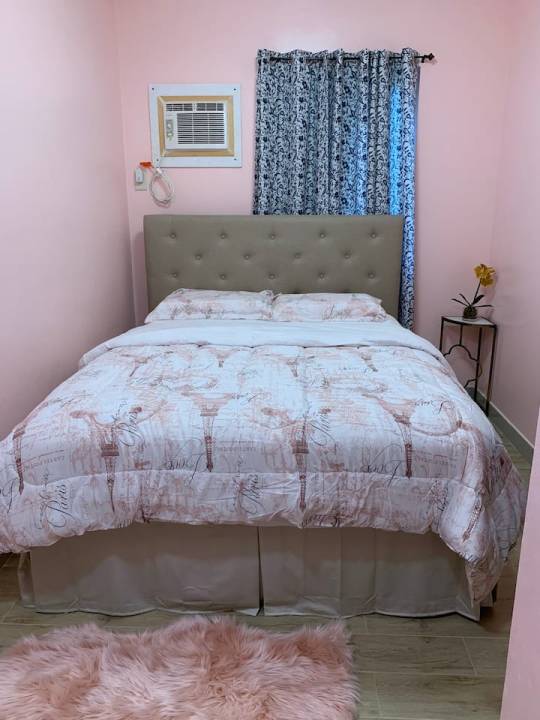

The drive from the airport to my Airbnb was 14 minutes. The most common form of transportation is bus, even with locals, but I decided to drive because it was faster and easier. While in Dededo, I decided to stop and get some food. I chose to get Dish-N-That, which is an American-centered restaurant. Their main focus is Smash Burgers. I apparently didn't wear my glasses, so I could barely see the menu. I decided to get an appetizer of onion rings which were $4.30 and for my meal I got the Bacon Double Cheese Burger which was $11.30. I didn't have to tip for my meal, because gratuity is included in the overall bill.



After getting food, I drove 12 minutes away to Ague Cove, located on the cost. Because Ague Cove is technically private property, I had to get permission to hike here first from Operations Officer Jesus Pangelinan. The hike down to the cove is pretty moderate and can only be challenging if it had just rain a day or two prior. Ague Cove can be very dangerous once you get to the bottom, due to the waves and super sharp coral. The hike back up can cause you cardiac arrest, so I had to be safe and bring extra water. The hike lasted about 3 hours to complete.
By the time I was finished with the hike, it was around 8PM, and I decided to head back to my Airbnb and get some sleep.
DAY TWO
I woke up and decided that today I would spend the day in Tamuning. I woke up around 11 and drove 17 minutes to Sakura Noodle House. I ordered the Chopseuey Noodles (fried) which was $10.50.
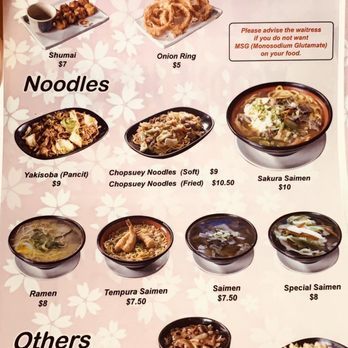
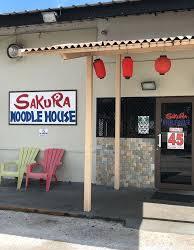
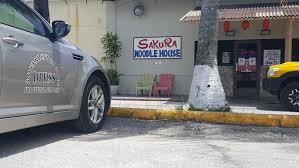
After eating, I drove down to Guam Ocean Park. You can get a free pass to spend the day there, and you can go jet skiing, snorkeling, kayaking, play volleyball, and swim all for free if you have the pass. The pass costs $200 for and an adult and $30 for a child. I chose the snorkeling tour. It lasts around 3 hours. After snorkeling, I went jet skiing.
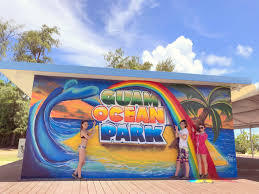



I spent around 5 hours at the Ocean Park, I drove to Three Squares Restaurant to get some dinner. For starters, I got the Local Sampler, which consists of tinala katne, coconut dinanche, chicken kelaguen, fried corn titiyas, and empanada dippers, costing $19.95. Tinala Katne originates from Guam, while Coconut Dinanche and Chicken Kelaguen originate from the Philippines. The reasoning behind the Filipino influence is because a third of the population of Guam is Filipino, with the other thirds being Chamorro and mixed. For my main meal, I got the Asian Chicken Salad (salad with teriyaki chicken, cucumbers, edamame, mandarin oranges, and fried wontons), which cost $15.95. My overall bill was $39.40 which included my tip.

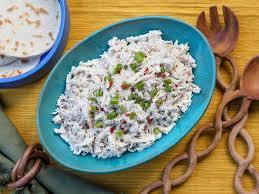

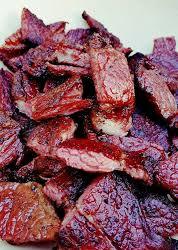

After dinner, I went back to my Airbnb to go to bed.
DAY THREE
Since today is my last full day in Guam, I thought I would do some research into the history and culture of Guam. The population is currently 171,774 people, the largest ethnic group being Chamorro. Chamorro is an Indigenous group of the Mariana Islands, and their ancestors come from Southeast Asia (mainly Indonesia and the Philippines) during 1600 BCE. In the 17 and 1800s, Spain got a hold of the Mariana Islands and spread diseases and violence, causing the Chamorro population to drop from 70,000 to 1,000 in 1820. Now in the 20th century, there are around 50,600 Chamorro descendants in Guam alone. They developed the Chamorro Language, which is most similar to Tagalog, and it is the 2nd most used language in Guam, after English. The main religion of the Chamorro people is Roman Catholic. 94.2% of Guam is Roman Catholic. The reasoning behind this is because of the centuries when Spain had control over the island. Guam became fully colonized by Spain in 1668, and they left in 1899.

After my research this morning, I wanted to get something to eat. The food that Guam is most known for is Chicken Kelaguen. Chicken Kelaguen is inspired by Philippine cuisine, but it has Latin American influences as well. The dish is chicken marinated in a lemony and spicy sauce with coconut added as well. You usually eat it with titiyas. To get this meal in Guam, I went to Chef's Inasal BBQ House located 7 minutes away from my Airbnb. The price for the Chicken Kelaguen was $21.30.


After lunch, I thought it would be best to visit the Micronesia Mall, located 4 minutes away. Micronesia Mall is one of the best things to do when visiting Guam. Opened on August 8, 1988, Micronesia Mall is the biggest mall in Guam. The owners chose that date because the number 8 is a lucky number in a lot of Asian cultures. The 4 anchor stores are Ross Dress for Less, two Macy's, and a 24-hour Payless Supermarket. The mall has a 24-hour food court, a 12-screen movie theater, and Funtastic Park, an amusement park with 7 different rides. Because all the stores and restaurants are the same ones found in America, I decided to not buy anything.
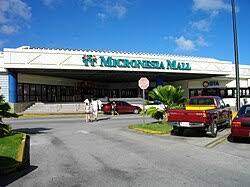

After the mall, I decided to check out the UnderWater World Aquarium. General Admission costs $23 for an adult and $15 for children. The aquarium is open from 10AM to 6PM, and since it was 4PM, I had plenty of time. You are 14 feet below water in the tunnel. Not only can you walk through the tunnel, which takes around 45 minutes to complete, but you can actually do a SeaTREK, which is when you get into the tank and swim with the animals. I obviously chose to do SeaTREK because that sounds amazing, it cost me $99, but it was an experience of a lifetime. Because the SeaTREK takes around an hour and 30 minutes, I decided to just do that and not walk through the tunnel.



DAY FOUR
Today is my last day in Guam! To start my day off, I went to the Guam Museum, located in Hagåtña. The Guam Museum was made to help people better understand the culture and history behind the Chamorro people by mediums such as sculpture, paintings, and short films. They started collecting art in 1887. The museum officially opened in 2014. The most recent artifact added to the museum was a photograph taken in 1916 of three Chamorro men preparing higai to repair the roof on their house.


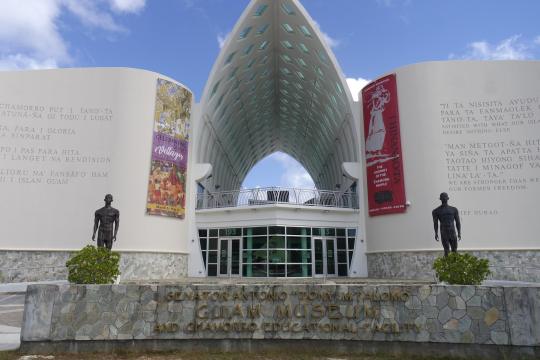
After the museum, I went across the street to Plaza De España, which was the Governor's Palace in 1734 until The Battle of Guam in 1941, but it was refurbished in 1885. Most of the Palace was destroyed during the battle, except for the three arch gate to Almacen, the back porch, and the Chocolate House.
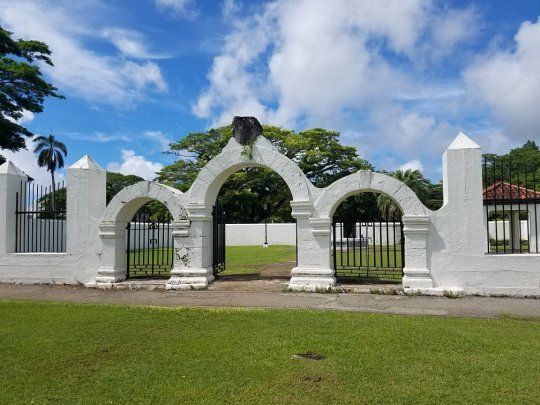

After leaving Plaza De España, I decided it was time to head to New Zealand and continue my Oceania adventure there. I really liked visiting Guam. Despite being a US Territory, Guam is its own country with its own unique culture. They offer so many fun activities for locals and tourists to participate in.
2 notes
·
View notes
Text
Ford Shuts Down in Brazil, and China’s Top EV Maker Comes to the Rescue
President Lula, seeking an industrial revival, snubs the US and looks to its No. 1 rival.

On Brazil’s east coast, the vast parking lot off Avenida Henry Ford sits empty. Shift workers once packed these spaces, next to a Ford Motor Co. plant that covers 1.8 square miles—an area larger than New York’s Central Park. On a recent weekday, a lone security car patrols its perimeter, the only sign of life.
Allison Barreto Sousa, a Ford maintenance technician for almost two decades, remembers when the company decided two years ago to shut down the plant, along with its entire operations in Brazil. Ford had a final ask: Could Sousa join a crew of 10 to perform the industrial equivalent of the last rites? They’d dismantle, piece by piece, the same equipment they’d once installed and maintained, so it could be packed up and shipped away. Sousa started the work, but memories of colleagues flooded his mind. He just couldn’t do it. “When I got married, I was at Ford. When my children were born, I was at Ford—all my good memories are somehow connected to Ford,” says Sousa, now 39. But then, “out of nowhere, came the silence. I asked not to come back.”
Today, Sousa hopes he can, no thanks to Ford. The new economic power in town is China—and its largest electric-vehicle maker, BYD Co. Those initials stand for “Build Your Dreams,” a phrase that very much reflects the hopes of Sousa and hundreds of his idled former co-workers. BYD is wrapping up negotiations with Ford to buy the shut-down factory in Camaçari, about 30 miles north of Salvador, the state capital of Bahia. (Ford says talks are continuing.) When the plant opens as expected later this year, it will be BYD’s most extensive electric-vehicle operation outside Asia.
The resurrection of the former Ford plant represents the grand industrial ambitions of President Luiz Inácio Lula da Silva, widely known as Lula. Much like US President Joe Biden, Lula dreams of spurring a manufacturing renaissance. Both leaders are eager to provide blue-collar jobs that can support middle-class lives, fulfilling campaign promises. But there’s an essential—and, for the US, vexing—difference: Biden aims to maintain an advantage over China in key technologies. Lula, a leftist who took office in January, is looking to China as the country’s benefactor.
Continue reading.
#brazil#politics#economy#china#brazilian politics#foreign policy#auto industry#mod nise da silveira#image description in alt
9 notes
·
View notes
Text
Acclaimed Dutch architect Rem Koolhaas described it a masterpiece of experimental architecture. Singaporeans were drawn to it for its atmosphere and the abundance of cheap Thai food. For Thais living in Singapore, it was a home away from home.
Golden Mile Complex, also known as Little Thailand, was sold in 2021 to a consortium which will redevelop the building. As it has been gazetted as a conserved building by the Urban Redevelopment Authority, its physical structure is likely to be preserved. However, the same cannot be said for its unique character. Its tenants – a mix of inexpensive Thai eateries, seedy bars and tiny shops selling Thai perishables – were given until May 2023 to move out. Now that they have dispersed, they are unlikely to return.
As an era in the building’s history ends, it is timely to look back at its history, which goes back five decades.
Building Golden Mile Complex
Officially opened on 28 January 1972, Golden Mile Complex was an urban renewal project by the government to “redevelop and rejuvenate the slum-ridden areas in the Singapore city centre”.1 In the 1960s, the site was home to squatter settlements, small-time furniture and rattan makers, and the Kampong Glam Community Centre.2
In June 1967, then Minister for Law and National Development E.W. Barker announced that the area would be one of 14 urban redevelopment projects which would be transformed – resulting in modern skyscrapers, luxury apartments, hotels and shops – to give rise to a “new look Singapore”. These projects would involve the participation of private enterprises.3
Singapura Developments won the tender for the three-acre site that would eventually host Golden Mile Complex with a proposal for a building by the architecture firm Design Partnership (now known as DP Architects), which was then helmed by William S.W. Lim, Tay Kheng Soon and Koh Seow Chuan. The three men had convinced Singapura Developments to bid for the site in May 1969, offering the unusual proposition for a single building that would integrate shops, offices and apartments. Although the concept differed sharply from the government’s original proposal for luxury apartments on the plot, Lim, Tay and another architect, Gan Eng Oon, proved their design could work with an economic feasibility study that included precisely calculated land and sale prices.4
The all-in-one design of Golden Mile Complex marked a significant shift from how city planners in Singapore then traditionally segregated areas into different zones for “live, work, play”. In fact, it embodied Lim’s vision for “megastructures” that would contain all the functions of a city within a building, which he believed to be the future of Asian cities.
“We must reject outdated planning principles that seek to segregate man’s activities into arbitrary zones, no matter how attractive it may look in ordered squares on a land use map. We must reject arbitrary standards laid down that limit the intensive use of land,” said Lim and Tay as part of an essay for the Singapore Planning and Urban Research Group that was published in Asia Magazine in 1966.5 This vision was realised in Golden Mile Complex: a concrete megastructure that became one of the earliest mixed-use developments in Singapore and Asia.6
In January 1970, Singapura Developments began marketing the property and declared that “The Golden Mile Race Is On”. All 64 apartments were snapped up within a month, and most of the offices and shops were sold by the time building works commenced in May 1970.7
The building was originally named Woh Hup Complex, after the parent company of Singapura Developments. Rising 16 storeys, the edifice was designed in the Brutalist style popular in Europe and North America from the 1950s to the 1970s.8 It was constructed in a stepped terraced design held up by two end pillars that each adorned a star logo by Singapore’s leading graphic designer William Lee.9 Such a facade maximised waterfront views for the 64 apartments and maisonette penthouses spread across the topmost seven floors.
The next six floors housed 210 offices and studios to complete the tower that was seemingly pried apart in the middle. This sheltered a residential play deck facing Beach Road on the 10th storey while letting in natural light and ventilation into the office corridors and a three-storey podium. The latter comprised 360 shops that sat atop a basement carpark for 550 vehicles.
Completing the facilities was a four-storey residential car park at one end of the building that was topped with an open-air swimming pool overlooking the former Crawford Park. All these different functions were connected by corridors, including a “street” that ran through the podium of shops. The result was an interiorised environment designed to “encourage human interaction and intensify public life”.10
A Hub of Modernity
Woh Hup Complex was part of a pioneering wave of shopping centres to open in Singapore in the early 1970s, along with People’s Park Complex in Chinatown and Tanglin Shopping Centre and Specialists’ Centre in the Orchard Road area.
Like many of the complexes built then, Woh Hup Complex was also a strata-titled development. This form of property ownership was introduced by the government in 1968 to allow individual owners to have a share of a land. It allowed property developers to quickly recoup their investment by tapping on a pool of buyers, and also enabled individuals to participate in the on-going modernisation of Singapore.11
Woh Hup Complex offered shop lots in various sizes, starting from a 144-square-foot lot for just $16,500.12 The prices were lower compared to other shopping centres because the complex was at the city centre fringe. But its developer remained bullish about its prospects. “We offer easy parking, no frayed nerves while coming up here,” said T.M. Yong, a director at Singapura Developments. “Our shop owners will most probably be able to offer goods at lower prices.”13 The earliest tenants in the complex were an eclectic mix of shoe retailers, beauty salons, photo studios, furniture suppliers, travel agents, eateries, restaurants and nightclubs.14
As one of the first buildings to offer modern office spaces in Singapore, Woh Hup Complex attracted many businesses too. Singapura Developments and its parent company Woh Hup as well as Design Partnership set up offices in the building.15 The complex also became known for its many architecture and engineering firms, including OD Architects who were conceiving the masterplan for the National University of Singapore’s Kent Ridge campus, Cardew and Rider Engineers who were working with Design Partnership on Marina Square, and several engineering firms involved in the construction of Singapore’s up-and-coming Mass Rapid Transit network.16
But a decade after the complex opened, there were complaints of interrupted water supply, faulty air-conditioning and lifts, leaking roofs, rotting ceiling boards, rubbish piling up along the corridors, and broken or missing lights.17 These were reported after Woh Hup exited the property market and sold Singapura Developments along with its properties to City Developments in 1981.18 Woh Hup Complex was then renamed Golden Mile Complex.
The Rise of “Little Thailand”
By the mid-1980s, many of the building professionals had moved their offices elsewhere and Golden Mile Complex became better known as the haunt of foreign construction workers, specifically those from Thailand.
After work, particularly on Sundays and public holidays, homesick Thai workers thronged Golden Mile Complex to drink Singha beer, catch up on news back home by reading Thai newspapers, and listen to Thai music on cassette tapes. The draw for most was the various eateries selling Thai food at reasonable prices on the ground floor. Not only did these establishments serve food just like home, they served them on tables and chairs “scattered in front of food shops” or along the corridors and the concourse – just “[like] a street corner in Haadyai or Bangkok”.19
Golden Mile Complex was also the terminal for tour buses plying the Singapore-Haadyai route operated by travel agencies located in the complex and the neighbouring Golden Mile Tower. As the Thai clientele in the complex grew, it became referred to as “Little Bangkok” and “Little Thailand”.20 The Thai community injected new life into what was then a rapidly ageing Golden Mile Complex, and attracted even more shops to serve the community. A tailor in the complex reportedly expanded from one shop to seven to sell all things Thai, while a “100% genuine Thai style” disco named Pattaya opened in 1988 on the second floor.21 There was even a 50-seat “cinema” that screened kick-boxing specials and Thai features at $3 a ticket.22
In 1986, the Straits Times reported that Golden Mile Complex “would be a ghost town but for the office workers, who appear at lunch time, and the Thais, who have made it their haunt”. Dorothy, a secretary working in an architecture firm in the complex, told the Straits Times: “Before the Thais started coming here about four years ago, the place was very dead. Now, it’s sometimes so noisy that you get a headache.” Because fights would occasionally break out, she was not a fan of the place. “For Thai food, I’d rather go to Joo Chiat,” she added.23 Her sentiments were shared by many other Singaporeans who avoided Golden Mile Complex on Sundays.
As one shopowner explained: “Our Sunday business has been hit. Some customers stay away because of the Thai character of the place.” A food stall operator added: “The Thais linger for hours, drinking beer and eating their favourite beef noodles. Sometimes, they fight among themselves over a few drinks.”24
It did not help that migrant workers and the complex were often in the news for the wrong reasons. As part of the government’s massive crackdown on illegal migrants in March 1989, 370 suspected Thai undocumented workers at Golden Mile Complex were nabbed in a single operation.25
National Icon or National Disgrace?
In 1994, Rem Koolhaas visited Singapore and marvelled at its development in his seminal essay “Singapore Songlines”. He was particularly captivated by Golden Mile Complex and People’s Park Complex, which he praised as “‘masterpieces’ of experimental architecture/urbanism”.26 On his next visit to Singapore in 2005, Koolhaas said: “These buildings were not intended to be landmarks but became landmarks. Yesterday, I went to see all the buildings again, and they are absolutely stunning, radical and amazing.”27
While Koolhaas and many in the architecture fraternity saw Golden Mile Complex as the future, most Singaporeans regarded it as a relic of the past. By the 1990s, a slew of new shopping centres had sprung up near the complex, including Raffles City, Bugis Junction, Suntec City, Millenia Walk and Marina Square. Many felt Golden Mile Complex and other strata-title malls were simply no match for these single-owner developments that could plan a more attractive retail mix to woo shoppers.28 A 1996 article in the Straits Times assessed that Golden Mile Complex was unlikely to change because of its ownership structure and should simply “fill [the] low-end gap”.29
The disconnect between Golden Mile Complex’s celebrated architecture and its decline came to a head in 2006. During a parliamentary session on 6 March, then Nominated Member of Parliament Ivan Png called it a “vertical slum”. He was particularly irked by how each individual owner had added “extensions, zinc sheets, patched floors, glass, all without any regard for other owners and without any regard for national welfare”, resulting in “a terrible eyesore and a national disgrace”.
“The appearance of Golden Mile Complex appals me whenever I drive along Nicoll Highway. It must create a terrible impression on foreign visitors arriving from the airport. How can we be a world-class city in a garden? The Golden Mile Complex is just the most extreme of how a strata-title property can deteriorate,” he said.30
This came just after Golden Mile Complex was featured in Singapore 1:1 – City, a publication showcasing significant architecture and urban design in the city-state.31 “That’s a real joke!” said Png. “Can you imagine if that thing was standing on the Singapore River between OCBC Building and UOB Centre?” He added: “It just gives me goosebumps. It’s so close to the city, yet it’s so unlike Singapore – orderly, tidy, everything neat. It’ll drag us down.”32
Not everyone agreed with his criticism. Retiree Evelyn Ong, who moved into the complex in 2005, immediately booked her 11-storey apartment after seeing the breathtaking views. She said: “Once I stepped in and saw the view, I said book, book, must book.” She bought her 1,000-square-foot apartment for about $310,000, and spent about $70,000 on renovations to make it look like a holiday resort. “I think I’m very lucky. It’s so difficult to find such a nice view. Every day, I sit here (at my balcony) and I can see the beautiful lights at night.” She agreed that more could be done to spruce up the building though.33
The local architecture fraternity pushed back against Png’s comments. In August 2006, Calvin Low, a trained architect and journalist, kickstarted a monthly series on local architecture in the Straits Times and titled his first article “Golden Mile Still Shines”.
“The architectural thesis that GMC [Golden Mile Complex] represented was revolutionary – not just for Singapore but globally, too. It stood as a concrete realisation of the architects’ vision of a futuristic city-within-a-building that offered a whole, new integrated way of living in a modern, tropical, urban Asian context,” he wrote.34
In November the same year, a collective of architects, designers and artists known as FARM launched “Save the Modern Building Series”, a lineup of talks to raise awareness of the complex and other pioneering modern buildings such as Pearl Bank Apartments.35 In November 2007, the inaugural architecture festival, Singapore ArchiFest 07 – organised by the Singapore Institute of Architects to celebrate Singapore’s built environment – featured tours of the complex conducted by architecture students from the National University of Singapore.36
A Landmark Saved, a Community Lost
In August 2018, news broke that more than 80 percent of the owners of units in the complex had agreed to put the building up for an en bloc sale at $800 million. This came hot on the heels of the sale of another modernist icon, Pearl Bank Apartments,37 just six months earlier. Heritage and architectural experts were dismayed at the news. “It will be a tragedy and a great loss to Singapore if the en-bloc sale results in the demolition and redevelopment of such an important urban landmark with such high architectural and social significance,” said heritage conservation expert Ho Weng Hin.38
Although architects and academics petitioned for Golden Mile Complex to be conserved, residents were in two minds about it. The complex’s long-time residents confessed they could no longer keep up with the building’s maintenance needs. “The problem is that it’s an old building, and when it rains, the water seeps through some of the walls. The building has water-proofing issues,” said Ponno Kalastree, who had lived and worked there since 1989. He was among those who had voted for the sale and was planning to downgrade to a Housing and Development Board flat, but admitted that he would miss the place.39
To the surprise of many, the Urban Redevelopment Authority (URA) told the Business Times in October 2018 that they have “assessed the building to have heritage value, and is in the process of engaging the stakeholders to explore options to facilitate conservation”. “Modern architecture, dating from our recent past, is a significant aspect of our built heritage, and we have selectively conserved a number of such buildings. Where there is strong support and merits for conservation, we will work with the relevant stakeholders to facilitate the process,” said the URA. This meant that the existing building could be retained while a new block would be added next to it.40
The tender closed in January the following year without any offer, and a second tender launched just two months later with the same terms and price tag of $800 million suffered the same fate.41
Almost one year after the two failed collective sales, the URA announced in October 2020 that it was officially proposing Golden Mile Complex to be conserved in light of its historical and architectural significance.42 When it was gazetted a year later in October 2021, Golden Mile Complex became the “first modern, large-scale strata-titled development to be conserved in Singapore”.43
The owners relaunched an en bloc sale in December that year at the same price of $800 million.44 This time, the sale was successful and the complex was sold in May 2022 to a consortium comprising Far East Organization, Sino Land and Perennial Holdings. Although their bid was $100 million lower than the reserve price, the owners agreed to the sale within “a record time of 15 days”.45
At the point of publishing this essay, the new owners have yet to reveal how they plan to redevelop Golden Mile Complex, though it is unlikely that any of the former tenants will return. The battle to conserve Golden Mile Complex has, ironically, cost the community who kept it alive when others moved on to swankier new buildings. But all, however, is not lost. The redevelopment of Golden Mile Complex could serve as a model for how other similar buildings in Singapore can be conserved and enjoy a new lease of life for the future.
9 notes
·
View notes
Text
Sun Myung Moon, anti-communism and the Japanese far right (1974)

▲ In 1974 Sun Myung Moon spent $350,000 on radio, TV, and other advertising to promote a major evangelical rally at Madison Square Garden to stimulate new support in the East. The event was held September 18 and attracted a large crowd of curious onlookers, hostile fundamentalists, leftist demonstrators, policemen, and atheists.
an extract from Korean Evangelism (1974)
The full article is available on WIOTM here:
https://whatisonthemoon.tumblr.com/post/720614563491561472/korean-evangelism-1974
... Reverend Sun Myung Moon, achieve notoriety when he announced last year in full page newspaper advertisements across the United States that President Nixon had been put into office by God and could be removed only by His will. Sun Myung Moon’s National Prayer and Fast Committee stuck by Nixon to the bitter end. (Thus did Moon inevitably meet Rabbi Korff, who then obligingly spoke before a Moon-affiliated organization on “The Fact of Communism and America’s Future.”10
The Reverend Moon is a new phenomenon in America, but not in Asia where his following now totals nearly a million people, concentrated in Korea, Japan, and Taiwan. Moon found his calling back in 1936 when Jesus Christ approached him on a mountainside and asked him to devote himself to God’s service as an evangelist. Moon waited until 1954, however, before organizing a new world religion, the Genri Undo, or Unification Church, formerly called the Holy Spirit Association for the Unification of World Christianity. (Detractors claim he got off to a slow start because of three arrests for sexual offenses. [1946, 1948 and 1955]) 11
Despite his wide following in Asia, and his whirlwind American tour last year, Moon has not attracted a wide following in the United States, where he can claim only about 25,000 supporters. Now that he can no longer lead the campaign to save President Nixon, Sun Myung Moon has fallen back on more traditional approaches. Recently he spent $350,000 on radio, TV, and other advertising to promote a major evangelical rally at Madison Square Garden to stimulate new support in the East. The event was held September 18 and attracted a large crowd of curious onlookers, hostile fundamentalists, leftist demonstrators, policemen, and atheists.12
Once described as a “Korean-style Elmer Gantry” but preferring the title, “God’s Hope for America,” the Reverend Moon preaches about the many dangers of communism along with his personal interpretations of the Bible. One Japanese source describes his movement as “less a religion than an anti-communist front group.” Rabbi Mark Tannenbaum of the American Jewish Committee observes that “Moon seems to be exploiting the emotional power of religion in order to indoctrinate his anti-communist ideology. The tragedy is that so many young people respond to this emotional appeal.” And he has predictably drawn fire from concerned clergymen, in the words of one, for his “seemingly cozy relationships with the dictatorial Park Chung Hee regime in South Korea.” In reply to these charges a Moon spokesman insists, “Many religions acknowledge the threat of Communism.”13
Sun Myung Moon can afford to lavishly finance his propaganda activities. Time estimated his personal fortune at $15 million, derived from investments in a tea company, titanium mines, retreat ranches, pharmaceutical firms, and shot gun manufacturers. Recently his Unification Church purchased several estates and an old seminary in New York for about $3 million. The question remains: is this vast international effort just a personal undertaking?14
Moon and his close associates are predictably silent, but disturbing evidence is emerging of his church’s close ties to anti-communist political organizations with less spiritual ends.
For example, Moon’s closest associate and English interpreter, Colonel Bo Hi Pak (“God’s Colonel”), formerly a Korean military attaché, has strong links to both Korean intelligence and the American CIA. He heads the Korean Cultural and Freedom Foundation (KCFF) which operates “Radio Free Asia,” possibly an outgrowth of a project by the American organization, Committee for a Free Asia (now the Asia Foundation), funded by the CIA. KCFF also conducts propaganda operations in Vietnam. Its legal counsel is none other than Robert Amory, Jr., former deputy director of the CIA. In 1962 Amory almost became head of the Asia Foundation (he was turned down to avoid blowing the CIA cover); now he is a law partner in Corcoran, Roley, Youngman & Rowe, a firm which has long handled the legal work for CIA proprietaries.15
The possibility of CIA involvement with a right-wing movement now entering the United States is frightening enough. But just as troubling are the close financial ties of Moon’s church to the world of wealthy neo-fascist Japanese capitalists, who seek not only a rollback of Communism but a new “Greater Asia” under the Emperor, based on the integration of Korea and Formosa into the Japanese orbit. In Japan, the chief financial backer and organizer of the Genri Undo is Sasagawa Ryoichi, the 75 year old former Class A war criminal. Back in 1931, with the notorious Kodama Yoshio, he formed a chauvinist patriotic party and intelligence organization that siphoned off enormous wealth from China during the Japanese occupation and ultimately provided much of the postwar financial backing for the ruling Liberal Democratic Party. In 1939 he set in motion the negotiations leading to the Tripartite Pact between Japan, Germany, and Italy; three years later he was elected to the Diet on an ultranationalist platform of southward expansion. His stint in the Sagumo Prison after World War II for suspected war crimes set back his career only a short while, for he and fellow inmates like Kodama Yoshio and former Prime Minister Kishi Nobusuke used their influence and time to plan the resurrection of the postwar Japanese Right.16
Both Sasagawa and Kodama still exercise enormous influence in Japan, and are described as “kuromaku” – powers behind the throne. The New York Times description of Kodama applies identically to Sasagawa: “Yoshio Kodama is among the most powerful men in Japan. He was instrumental in founding the nation’s governing party, he has had a hand in naming several Premiers, he has settled dozens of disputes among top businessmen. He also commands the allegiance of Japan’s ultra-right wing and has strong influence over the yakuza, or gangsters, of the underworld here.”17 Both are dedicated to restoring the power of the Emperor and crushing opposition to the Right.
Sasagawa, as president of the Japan-Indonesia Association and Japan-Philippine Association, both reminiscent of the prewar imperialist South Seas Association, has helped to spearhead the southward Japanese commercial advance in Asia. He funded the anti-Sukarno forces which organized the Indonesian coup d’état of September 30, 1965; he likewise supported the Lon Nol faction which overthrew King Sihanouk in Cambodia in 1970, and arranged for Japanese economic aid to prop up the new government. Currently he is active in strengthening Japanese ties with the strategic Arabian peninsula, through his Japan-Oman Association. Most significantly, Sasagawa has long been a leading light in the Asian Peoples’ Anti-Communist League, and was behind the recent organization of the World Anti-Communist League. With his vast fortune acquired from shipbuilding, gambling, and organized crime, Sasagawa not only influences the Japanese government but acts as a powerful force in all of “Greater Asia.” His support of Moon’s Unification Church is thus just one of many elements in the constellation of interlocking activities surrounding the Japanese, Asian, and world right-wing movements which still thrive in many forms.
...
Sources
William Turner, Power Out the Right (Berkeley: Ramparts Press, 1971); Jane Kramer, “Letter From Guyana,” New Yorker (September 16, 1974), pp. 100-128; Cheddi Japan, The West on Trial (London, 1966), p. 307.
Footnotes
...
10. On Korff’s close relationship to Moon, see Washington Post, July 25, 1974; New York Post, September 16, 1974. Rabbi Korff’s latest project is to force Congress to impose severe curbs on the media, which he blames for President Nixon’s downfall (Washington Post, August 17, 1974).
11. Daily News (New York), September 13, 1974; Christianity Today, March 1, 1974, pp. 101-02; AMPO, Winter, 1974, p. 43; New York Times, September 16, 1974; Village Voice, September 12, 1974. Estimates vary as to the size of Moon’s worldwide following; Moon’s chief associate put the figure at over two million (New York Times, September 16, 1974).
[ Ewha Womans University sex scandal and Sun Myung Moon as told in the 1955 newspapers
Sun Myung Moon found guilty in 1955; started two year jail sentence ]
12. New York Times, September 16, 1974 (including full-page advertisement on p. 40); Daily News, September 13, 1974; New York Times, September 19, 1974; UPI dispatch, September 19, 1974; Wall Street Journal, September 20, 1974.
13. AMPO, Winter, 1974, p. 43; New York Post, September 16, 1974. Moon’s organization has created a number of secular anti-communist front groups including the International Federation for Victory over Communism, the World Freedom Institute, and the Freedom Leadership Foundation. The South Korean Government sends its civil servants to an anti-communist indoctrination center in Seoul operated by the Church (Village Voice, September 12, 1974; New York Times, September 17, 1974).
14. Time, October 15, 1973, pp. 129-30; Daily News, September 13, 1974; Christianity Today, March 1, 1974, pp. 101-02. Moon’s church is worth “far more” than Moon’s personal $15 million (New York Times, September 16, 1974).
15. Village Voice, September 12, 1974; Steve Weissman and John Shoch, “CIAsia Foundation,” Pacific Research, September~October, 1972. One of Corcoran’s earliest projects for the CIA was representing Chennault’s Civil Air Transport, now Air America. CIA officials deny any ties to Moon’s Unification Church, but funding of the Church remains mysterious (Wall Street Journal, September 20, 1974).
16. AMPO, Winter, 1974, p. 43; New York Times, July 2, 1974; Don Kurzman, Kishi and Japan (Astor-Honor).
17. New York Times, July 2, 1974. Sasagawa has been implicated in recent Japanese election irregularities. See Far Eastern Economic Review, September 6, 1974, p. 28.
18. AMPO, Winter, 1974, pp. 43-5.
__________________________________
Sun Myung Moon organization activities in Central & South America
1. Introduction
2. ‘Illegal Aliens Joining Moonies’ – The Pittsburg Press
3. Moon’s ‘Cause’ Takes Aim At Communism in the Americas – Washington Post
4. Moon in Latin America: Building the Bases of a World Organisation – Guardian
5. Guatemala
6. Nicaragua
7. Honduras
8. Costa Rica
9. Bolivia
10. Uruguay
11. Paraguay
12. Brazil
__________________________________
Politics and religion interwoven
Contents
1. Shadows on Rev. Moon’s beams. Politics and religion interwoven.
Chicago Tribune – Sunday, November 10, 1974
2. Howling at the Moon – Chicago Reader Weekly Friday, November 22, 1974
3. Messiah Sun Myung Moon on the Run
4. The Unification Church: Christian Church or Political Movement?
– by Wi Jo Kang (1976)
5. Moon’s Sect Pushes Pro-Seoul Activities – by Ann Crittenden
. The New York Times, May 25, 1976
6. Panel Told Seoul Used Followers of Sun Myung Moon for Protests
. The New York Times, June 7, 1978
7. Unification Church Protected by the Regime in South Korea
. 週刊ポスト Shūkan Post magazine October 15, 1993
8. American Dynasty: Aristocracy, Fortune, and the Politics of Deceit
in the House of Bush – by Kevin Phillips (2004)
9. Missing Pieces of the Story of Sun Myung Moon
– by Frederick Clarkson (2012)
10. Sun Myung Moon was nominated for the Nobel Peace Prize in 2002.
It seems the manufacture of Moon’s ‘Autobiography’ was an attempt to promote Moon for the Nobel Peace Prize. However, the publisher of the book was jailed for four years for fraud – for buying books from stores to push the book up the best-seller list, and for other financial crimes.
11. ‘Privatizing’ Covert Action: The Case of the Unification Church
Dr. Jeffrey M. Bale Lobster #21. May 1991
Introduction
__________________________________
The Sun Myung Moon church – Jane Day Mook & Hiroshi Yamaguchi (1974 & 1975)
4 notes
·
View notes
Text
5 notes
·
View notes
Note
hiiiiii Asia. ive been so busy experiencing an actual social life and having very lgbt things happening to me that my interest in studying has dipped by a scary amount. like yeah im gaining unlimited rizz right now because of my Venus return… but ive been getting too lazy and hedonistic out here so im struggling 🥲 rip in peace to me ig
but if im not gonna do studying then i should at least keep up my interest by studying other charts. ive pretty much exhausted the boys — unless something in the astro weather occurs onto Micky, there’s not much left to share. of course though if i find anything new to me you know i’ll message you straight away 🫶🏻
so instead of the guys, i hear people around here like this band called “the beatles”. i don’t know much about them so forgive me that i won’t be able to go in-depth with it (beatlemaniacs do your thing), but i’ll share some astro observations anyways:
Paul’s chart goes crazy with the 3H & 4H stelliums — majority of them in Gemini; as a Gemini stellium myself i bet either of two things: 1. once you get him talking he never shuts the fuck up, or 2. doesn’t talk unless it’s to provide information (😔🤚🏻 guilty as charged officer). only his Jupiter (+ asteroid Hygeia) are in Cancer in his 4H. his Moon, Mars, Pluto and asteroid Chiron are in the 6H ruled by Leo, so his normal life is always entertaining yet risky… perhaps at the cost of his fame. his 8H, 9H and 10H are all empty.
John has a 6H stellium, primarily in Libra, as his Venus and Neptune (+ asteroid Chariklo) are in Virgo, which i think is definitely where his personal philosophy stems from; Libra is all about balance, peace and relationships, while Virgo is all about practicality, routine and health. his 1H has his Jupiter, Saturn and Uranus all in Taurus. his Aquarius Moon resides in the 11H and his Scorpio Mercury resides in his 7H — absolute weird girl energy. i took a skim of the aspects and they’re a lot of squares jumping out, so lots of conflict between wants and needs. he has an empty 3H and 8H.
George has a 1H Scorpio Moon, which is a great start /sc. his asteroid Psyche also resides in his 1H… i sense a moody bitch in our midst. interestingly it’s hard to pinpoint a stellium for him, i would say his 4H and 9H, which both houses dual two different signs; it’s giving confusion and contradictions. his Pisces Sun and Aquarius Mercury reside in the 4H, his Pisces Venus residing in the 5H, his Capricorn Mars residing in the 3H, his Jupiter and Pluto residing in the 9H, and his Saturn and Uranus (+ Vertex) residing in the 8H. he has an empty 2H and 7H — he has no Sagittarius placements either.
Ringo has a 5H stellium, mostly in Leo, as his asteroid Chiron is in Cancer; his Moon, Mercury, Mars and Pluto reside there, which makes him sound like so much fun honestly, but might be an egomaniac at points (it happens to the best of all Leo placements — esp the Pluto Leo boomer generation lol). his Sun and Venus in Cancer reside in the 4H, his Virgo Neptune in the 6H, his Jupiter and Saturn in Taurus in the 1H, and Taurus Uranus in the 2H. he has his 8H and 10H empty, and he has no Scorpio placements.
i hope this satisfies you all. peace and love on planet earth ✌🏻💖 !!
kale i am so, so, so, so happy for you and your social life popping off (ESPECIALLY THE LGBTQ THINGS <3 <3)!!!!!! i can not stress how happy this makes me enough, like yes go out and fucking SLAY kale you deserve it!!
also god fucking bless you for providing me an astro fix, i actually am very fucking impressed with how well all of these track tbh (i'm not a super fan by any stretch of the imagination, but these seem so accurate to me). also can relate to the whole you and paul talking forever and ever amen because once i get going i'm unstoppable too dude
#KALE MY WONDERFUL BEAUTIFUL FRIEND KALE I LOVE YOU!!!!!!!!!!!!!!#ALSO i was going to send you an ask letting you know that after you sent me the peter autism day celebration one i listened to gettin' in#and felt better so peter really did help in that moment <3#rhubarb asks#the beatles
4 notes
·
View notes
Text
Tuesday, May 16, 2023
TSA tests facial recognition technology to boost airport security
(AP) A passenger walks up to an airport security checkpoint, slips an ID card into a slot and looks into a camera atop a small screen. The screen flashes “Photo Complete” and the person walks through—all without having to hand over their identification to the TSA officer sitting behind the screen. It’s all part of a pilot project by the Transportation Security Administration to assess the use of facial recognition technology at a number of airports across the country. The effort comes at a time when the use of various forms of technology to enhance security and streamline procedures is only increasing. TSA says the pilot is voluntary and accurate, but critics have raised concerns about questions of bias in facial recognition technology and possible repercussions for passengers who want to opt out. Travelers put their driver’s license into a slot that reads the card or place their passport photo against a card reader. Then they look at a camera on a screen about the size of an iPad, which captures their image and compares it to their ID. The technology is both checking to make sure the people at the airport match the ID they present and that the identification is in fact real. A TSA officer is still there and signs off on the screening.
NYC converts hotels to shelters as pressure mounts to accommodate asylum seekers
(AP) The historic Roosevelt Hotel in midtown Manhattan shuttered three years ago, but it will soon be bustling again—reopening to accommodate an anticipated influx of asylum seekers just as other New York City hotels are being converted to emergency shelters. Mayor Eric Adams announced Saturday that the city will use the Roosevelt to eventually provide as many as 1,000 rooms for migrants. Across the city, hotels like the Roosevelt that served tourists just a few years ago are being transformed into emergency shelters, many of them in prime locations within walking distance from Times Square, the World Trade Center memorial site and the Empire State Building. A legal mandate requires the city to provide shelter to anyone who needs it. Even so, Adams says the city is running out of room for migrants and has sought financial help from the state and federal governments.
Title 42 Is Gone, but Not the Conditions Driving Migrants to the U.S.
(NYT) Relative quiet has prevailed along the southern U.S. border since Friday, despite widespread fears that ending a pandemic-era policy to immediately expel most migrants, even asylum seekers, would set off a stampede from Mexico. A surge in migrants did in fact happen. On some days last week, apprehensions reached about 11,000, among the highest recorded. But the lull could be the calm before another storm. Beyond U.S. borders, political instability, gang violence and climate change will continue to spur emigration. Much of the developing world, from Africa and Asia to South America and the Caribbean, is still reeling from economic ruin wrought by Covid-19 and exacerbated by the war in Ukraine. “Everyone is looking at the arrivals at the border, but the root of the problem lies in push factors inside countries of origin that are going to persist,” said Justin Gest, a political scientist at George Mason University who studies immigration. “When crises occur, they generate northbound flows,” he said. And, beyond the factors pushing migrants out of their home countries, the magnet drawing people to the United States is the labor market. Unemployment stands at its lowest level in decades, yet there are millions of unfilled jobs.
France pledges more military aid as Ukraine’s Zelenskyy makes surprise Paris visit
(AP) France pledged additional military aid for Ukraine on Sunday, including light tanks, armored vehicles, training for soldiers and other assistance as the Ukrainians gear up for a counteroffensive against Russian forces, following surprise talks in Paris between the Ukrainian and French presidents. Ukraine’s Volodymyr Zelenskyy and France’s Emmanuel Macron met for about three hours at the French presidential Elysee Palace—an encounter kept under wraps until shortly before the Ukrainian leader’s arrival in Paris from Germany on a French government jet, extending his multi-stop European tour. With Ukraine planning to go on the offensive hoping to retake Russian-occupied territory, military aid was a top agenda item. Macron’s office said France will supply dozens of light tanks and armored vehicles “in the weeks ahead,” without giving specific numbers. Also promised were more air defense systems, but again details weren’t made public.
As Ukraine Makes Inroads in Bakhmut, Devastation Still Reigns
(NYT) For nearly a year, Ukraine has been simply trying to hold on in Bakhmut as Russian forces pressed in on the city from both sides while at the same time laying waste—block by bloody block—to what had once been a vibrant salt-mining city of 80,000. Over time, Bakhmut has taken on an outsize importance: a symbol of Ukrainian defiance and of Russian leaders’ determination to blast their way to a small victory in a little-known corner of eastern Ukraine. Last week, for the first time, Ukrainian forces launched a series of coordinated counterattacks and in a matter of days won back territory north and south of the city that it had taken Russian forces months to capture. But Russian forces still control more than 90 percent of the city, according to Russian and Ukrainian officials. The commander of the 24th Motorized Rifle Brigade, who goes by the call sign Prince, said on Saturday that after taking a short tactical pause, Russian forces were furiously assaulting the city again. “Artillery fire, rocket and airstrikes do not stop for a minute,” he said. “Every meter of the city is now under shelling.”
The Ivy-educated opposition leader who could end Thai military rule
(Washington Post) For nearly a decade, Thailand has been led by an authoritarian military establishment—but Pita Limjaroenrat, an Ivy League-educated business executive and leader of a liberal opposition party, is seeking to change that. The results of Sunday’s election appear to have gone largely in his party’s favor, potentially setting the stage for Pita to become the country’s next prime minister, but rules set in place after a 2014 military coup could complicate that process. At 42, Pita is nearly 30 years younger than Thailand’s current leader, retired general Prayuth Chan-ocha, who took power after the 2014 coup. Pita was born in Thailand but raised in New Zealand before he returned to his native country and completed an undergraduate degree in finance and banking at Thammasat University in Bangkok. He went on to earn master’s degrees in public policy and business from Harvard University and the Massachusetts Institute of Technology, according to his legislative biography. Before becoming a member of Thailand’s parliament in 2018, he worked as the head of ride-share company Grab’s operations in Thailand and earlier as a consultant at Boston Consulting Group. He has pledged to move Thailand out of what he calls a “lost decade” of slow economic growth. Part of that plan, he says, includes diversifying Thailand’s tourism-dependent economy and spreading it out beyond the capital, Bangkok. In a televised interview with Bloomberg last month, Pita said three main points of his agenda are to “demilitarize, de-monopolize and decentralize.”
China launches projects to build ‘new-era’ marriage, childbearing culture
(Reuters) China will launch pilot projects in more than 20 cities to create a “new-era” marriage and childbearing culture to foster a friendly child bearing environment, the latest move by authorities to boost the country’s falling birth rate. China’s Family Planning Association, a national body that implements the government’s population and fertility measures, will launch the projects to encourage women to marry and have children, state backed Global Times reported on Monday. The projects come amid a flurry of measures Chinese provinces are rolling out to spur people to have children, including tax incentives, housing subsidies, and free or subsidised education for having a third child. China implemented a rigid one-child policy from 1980 until 2015—the root of many of its demographic challenges that have allowed India to become the world’s most populous nation. The limit has since been raised to three children.
China sentences 78-year-old US citizen to life in prison on spying charges
(AP) China sentenced a 78-year-old United States citizen to life in prison Monday on spying charges, in a case that could exacerbate the deterioration in ties between Beijing and Washington over recent years. Details of the charges against John Shing-Wan Leung, who also holds permanent residency in Hong Kong, have not been publicly released. Leung was detained April 15, 2021, by the local bureau of China’s counterintelligence agency in the southeastern city of Suzhou. Relations between Washington and Beijing are at their lowest in decades amid disputes over trade, technology, human rights and China’s increasingly aggressive approach toward its territorial claims involving self-governing Taiwan and the South China Sea.
Off-grid solar power brings light to remote villages
LAINDEHA, Indonesia (AP)—As Tamar Ana Jawa wove a red sarong in the fading sunlight, her neighbor switched on a light bulb dangling from the sloping tin roof. It was just one bulb powered by a small solar panel, but in this remote village that means a lot. In some of the world’s most remote places, off-grid solar systems are bringing villagers like Jawa more hours in the day, more money and more social gatherings. Now, villagers frequently gather in the evening to continue the day’s work, gather to watch television shows on cellphones charged by the panels and help children do homework in light bright enough to read. Some 775 million people globally lacked access to electricity in 2022, according to the International Energy Agency. Sub-Saharan Africa and South Asia are home to some of the largest populations without access to electricity. Not having electricity at home keeps people in poverty, the U.N. and World Bank wrote in a 2021 report.
Massive new US embassy complex in Lebanon is raising eyebrows
(CNN) A massive new US embassy complex in Lebanon is causing controversy for its sheer size and opulence in a country where nearly 80% of the population is under the poverty line. Located some 13 kilometers (about 8 miles) from the center of Beirut and built on the site of the current embassy, the US’ new compound in Lebanon looks like a city of its own. Sprawling over a 43-acre site, the complex in the Beirut suburb of Awkar is almost two-and-a-half times the size of the land the White House sits on and more than 21 soccer fields. Many Lebanese on Twitter questioned why the US needs such a large embassy in their capital. Lebanon is smaller than Connecticut and has a population of just six million and few American tourists go to the country. “Did the US move to Lebanon??” tweeted Sandy, a social media activist. “Maybe you’ll have enough room to work on all those pending visa applications,” tweeted Abed A. Ayoub, national executive director of the American-Arab Anti-Discrimination Committee, responding to the grandiosity of the new complex.
2 notes
·
View notes
Text
Elegant Bamboo Hand-Woven LED Pendant Light

Discover Timeless Elegance and Natural Beauty
Enhance your living space with the Elegant Bamboo Hand-Woven LED Pendant Light. This exquisite ceiling lamp, crafted with meticulous attention to detail, brings a touch of Southeast Asia's serene aesthetics to your home. Its natural bamboo and wooden materials, coupled with a hand-knitted design, make each piece a unique work of art, perfect for adding warmth and charm to any room.
Product Features
- Handcrafted Design: Each pendant light is delicately hand-knitted from bamboo, ensuring a unique, high-quality finish.
- Versatile Placement: Ideal for a variety of settings including the parlor, study, bedrooms, hotel halls, and rooms.
- Quality Lighting: Equipped to house a single LED bulb, it illuminates a 10-15 square meter area, creating a cozy ambiance.
- Durable and Safe: Certified with CCC, CE, CQC, and ROHS, it's a reliable lighting choice with a 2-year warranty.
When and Where to Use
This pendant light is perfect for those looking to add a natural, yet modern touch to their environment. Whether it’s for a relaxed evening in the master bedroom, a study session in your home office, or adding a welcoming glow to hotel spaces, this lamp is versatile enough for any occasion.
What Makes It Special?
Aside from its enchanting design, this pendant light stands out for its handcrafted quality and natural materials. Unlike mass-produced fixtures, each lamp tells its own story and brings a unique character to your decor. Its eco-friendly bamboo composition not only looks beautiful but also represents a sustainable lighting choice.
Product Benefits
- Eco-Friendly Design: Made from natural bamboo, promoting sustainable living.
- Easy Installation: Comes as a cord pendant for hassle-free setup.
- Non-Dimmable Yet Ambient: Provides a steady, warm glow for a relaxing atmosphere.
- Stylishly Southeast Asian: Adds a cultural touch to your decor.
Embrace the harmony of nature and style with the Elegant Bamboo Hand-Woven LED Pendant Light. Its handcrafted beauty and warm illumination are sure to enrich your living spaces. Transform your home or hotel with this charming pendant light today!
Read the full article
0 notes
Text
Shipping from China to Jamaica: Our Door-to-Door Service Surprised Andre
Shipping from China to Jamaica: Our Door-to-Door Service Surprised Andre
Our Jamaican client, Andre, ordered a shipment of fresh tropical fruits and high-end electronics. This wasn't just any shipment—it included vibrant, aromatic fruits selected from Southeast Asia, and the latest electronic products like smartphones and wireless chargers. Andre runs a high-end supermarket and electronics experience store in Jamaica, and he frequently imports goods from China. The two types of goods were packed in separate 40-foot containers. While the electronics could wait, the fruits, though treated for preservation, needed to be shipped as quickly as possible. So, Andre requested storage services to hold the electronics in our warehouse until the fruits arrived, and then ship them together swiftly.

When shipping from China to Jamaica, finding a reliable logistics company in China is crucial, especially one with its own warehouse. This ensures full control over the logistics process, guaranteeing timely delivery and high-quality management. We at Sunny Worldwide Logistics have our own dedicated foreign trade warehouse at Yantian Port. Out of the 60,000 freight companies in Shenzhen, only three, including us, have such facilities.
Moreover, Sunny Worldwide Logistics owns its own fleet of container trucks—a rare asset among freight companies, with only 10% having this capability. The fruits were shipped from Southeast Asia, and when Andre’s Guangzhou office received them, they contacted us immediately. I quickly arranged for a truck to transport the fruits to our warehouse.
Andre’s team is small, and for shipping from China to Jamaica, he relies on us to provide a comprehensive service. We offer a door-to-door service with customs clearance and tax included. This service not only covers delivery from door to door but also takes care of customs declarations in China and clearance in Jamaica. Regular couriers and logistics companies typically don’t include customs clearance, requiring clients to handle it themselves. Many people now shop online internationally, and individuals often can’t manage customs clearance on their own. We help domestic clients with customs declarations and assist international clients with clearance and delivery. This door-to-door service is very client-friendly, solving the last-mile problem in logistics and making the process hassle-free for our clients. This was exactly the service Andre needed.
After completing all these tasks, I coordinated with suppliers to prepare the customs documents and confirmed the bill of lading details with Andre. Given the tight timeline, we needed to finalize the bill of lading by Friday, so I called Andre to verify the necessary information, leading to a successful departure.
Once the shipment set sail, I prepared the certificate of origin and the original bill of lading for Andre. After Andre made the payment, I sent the original bill of lading to him. The goods safely arrived at Kingston Port, Jamaica, as scheduled. Upon arrival, our local agent handled the collection, customs clearance, and delivery by truck to Andre’s store. When Andre saw the still-fresh, vibrant tropical fruits and the intact electronics, he was very pleased.
At Sunny Worldwide Logistics, we have a dedicated foreign trade warehouse at Yantian Port—one of only three companies out of 60,000 in Shenzhen with this capacity. We also own an 1800-square-meter Grade A office building, ranking in the top 3 in our industry, and operate our own fleet of container trucks, a capability only 10% of companies in our field possess. If you have needs of shipping from China to Jamaica, feel free to reach out to us!
0 notes